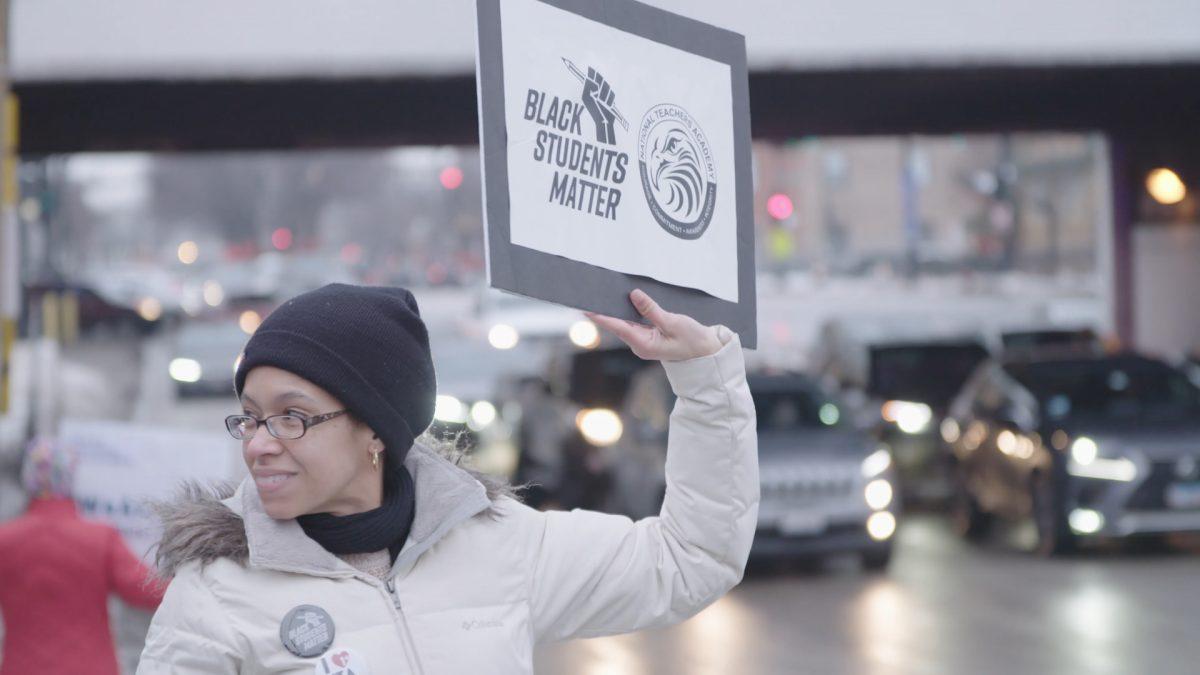[Warning: this story contains spoilers about the plot of the film]
“When our schools are under attack, what do we do? Fight back!” The students of the National Teachers Academy chanted during a protest in an ongoing battle with Chicago Public Schools.
Director Kevin Shaw’s film documentary “Let the Little Light Shine” presents the importance of disrupting social spaces by speaking up.
The world premiere of the documentary screened on March 4, 2022 at True/False Film Festival in the Blue Note.
Shaw begins the story with community members of NTA protesting outside of local politicians’ homes, but then the film goes back to where the situation started. In 2017, CPS proposed closing NTA, a high-achieving majority Black pre-kindergarten through eighth grade public school in South Chicago, to convert it into a high school. CPS stated this was to alleviate issues of overcrowding.
With just these facts, their proposal seemed like a reasonable solution, yet CPS failed to acknowledge the community they would be displacing. This is the heart of Shaw’s creation; he amplifies the voices of the students, teachers and parents of NTA who felt strongly about their community.
CPS wanted to integrate the South Loop community into NTA, however, within the details were plans to essentially segregate students of NTA from others during school days. Overcrowding only became an issue in the South Loop area because many families avoided having their children attend NTA, despite NTA’s success and status as a Level 1+ school. Ironically, the reason parents’ viewed South Loop as “superior” is because of gentrification, a problem CPS perpetuated with their proposal.
Shaw conveys that the subtext of the proposal was a matter of racial stereotypes and systematic racism, representing intersections with class.
One parent of the NTA community, Elisabeth Greer, provided information on her and her parents’ backgrounds as Black family members who have all pursued higher education. This example from Greer focuses on the racist assumption that Black people are intellectually inferior, and this stereotype is frequently stomped out throughout the documentary. In particular, members of the South Loop community perpetuate this stereotype without even realizing it.
The complexity of the subject was illustrated by Shaw when he filmed the raw emotions of NTA community members as they rally together to make their thoughts on CPS’s proposal known. Beyond sadness and frustration, he captures moments of resilience, determination and pure joy. This created a human aspect to the story, which allowed deeper connection to their point of view.
The documentary let various members of NTA demonstrate why their community is vital to them, and how crucial a stable educational environment is for children and, specifically, Black students. Former Principal of NTA, Issaac Castelaz, works closely with students to build personal connections to make them feel welcomed. In particular, the development of one student’s self esteem, as a result of Castelaz’s efforts, exemplifies the importance of spaces that truly support kids not just as students.
Each aspect of the narrative adds context and layers. Whether he agreed with their opinions or not, Shaw conveys an opposition of perspectives between NTA and CPS. These different viewpoints further strengthened Shaw’s theme of disruption as members of NTA stayed resilient when faced with backlash.
“Let the Little Light Shine” concludes on an uplifting and inspirational beat as NTA wins their civil rights lawsuit against CPS and causes them to drop their proposals. Shaw makes it clear in the film that a victory for NTA wouldn’t have occurred if members of the community were passive. Parents, educators and even young children all use their voices to save what’s important to them.
After the screening, audience members expressed the inspiration this film brought them. Shaw announced plans to present the film to the NTA community in a few months and air the documentary on PBS starting in Dec. 2022.
Edited by Camila Fowler | [email protected]








